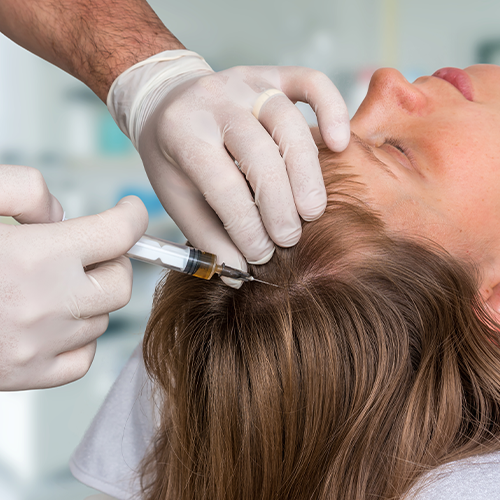
Breast enlargement (augmentation) is the most popular type of cosmetic surgery and generally used to increase breast size, add fullness, or correct a congenital breast defect, usually through a breast implant or fat transfer.
Breast implants surgery is a common plastic surgery for a variety of reasons, including medical and aesthetic reasons, such as balancing breast size, providing volume, or correcting a genetic breast complication.
Breast enlargement surgery can help you get a larger breast size and a more attractive breast shape. The procedure is intended to improve breast shape and correct the anomalies while also providing a modest lift to the breasts. The operation can be carried out with either breasts implants or fat transfer augmentation by placing a breast implant over the muscle. Silicone or saline may be used in the implant. It's important to consult your surgeon about what would be the best option for you.
Breast augmentations surgery have high satisfaction rates and give successful results. The operation help increase patients’ self-confidence and self-esteem.
The reasons of Breast Enlargement Surgery
There are many reasons people may want or prefer to breast enlargement surgery, including:
- Small breasts cause problems in your confidence and self-esteem
- Disproportion between body shape or the asymmetry of your breasts if one is smaller than the other.
- Decrease in your breast size after pregnancy
- Breast unevenness or issues with your breasts after significant weight loss.
Points to Take Consideration Before Breast Enlargement Surgery 
You should first consult a qualified plastic surgeon about the controls required for the operation and evaluate all your needs, concerns and decide on the type of treatment option is best for you.
Generally, between 18 to 70 years old all women can have breast enlargements done, however the ideal age for a breast enlargement surgery is recommended after the age of 18 when the breasts are fully developed. Because of different stages of breast development, patients are recommended to undergo until they are at least 22 years old.
Important instructions to follow before your surgery;
- Stop smoking and drinking alcohol
- Avoid taking aspirin and certain anti-inflammatory medicine
- Avoid certain foods or beverages eight hours before the operation
- Get a ultrasound scan and mammography result
Different Types of Breast Implants
There are two main ways to insert the implant: under your breast tissue and in front of or behind your breast muscle. It depends on a number of factors, including the type of implant you prefer and the size of your breasts. There are two different implants; round breast implants and drop model breast implants. Drop model implants are preferred in cases of very little breast tissue. You can discuss these possible options with your surgeon before your surgery and can make a choice together which options best suits your needs.
The Operation Process
Operation will be performed under general anesthesia; the patient will not feel any pain. The operation takes 1-3 hours on average. Depending on each patient’s unique condition in Orenda Health ,the patient can stand up a few hours after the operation. The average hospital stay is one day which helps monitoring for potential complications.
The Recovery Time After Operation
You may experience a little bit pain in your breasts for one or two days after the surgery. Your surgeon will give you medication to control your pain and schedule appointment for the recovery process.
After 3-5 days, you can take a shower and start working. After the operation, the patient should go for control at the periods (such as 1, 3, 6 months). Tapes or ointments can be used to help the incision scar heal smoothly. The incision scar will take its final form in an average of one year.
After one week, your stitches will be removed by your surgeon. You should avoid stretching, exercise or any heavy lifting for at least four weeks after the surgery. It may take about six weeks before you can return to sport activities.
The surgical scars will fade over time and become vague after six months or one year. The full recovery generally takes about six to eight weeks in Orenda Health with provided high quality techniques.It is recommended that patients should wait at least three weeks before returning to their work.

 Average length of stay
Average length of stay Length of stay in hospital
Length of stay in hospital Operation duration
Operation duration Anesthesia
Anesthesia Recovery Duration
Recovery Duration



